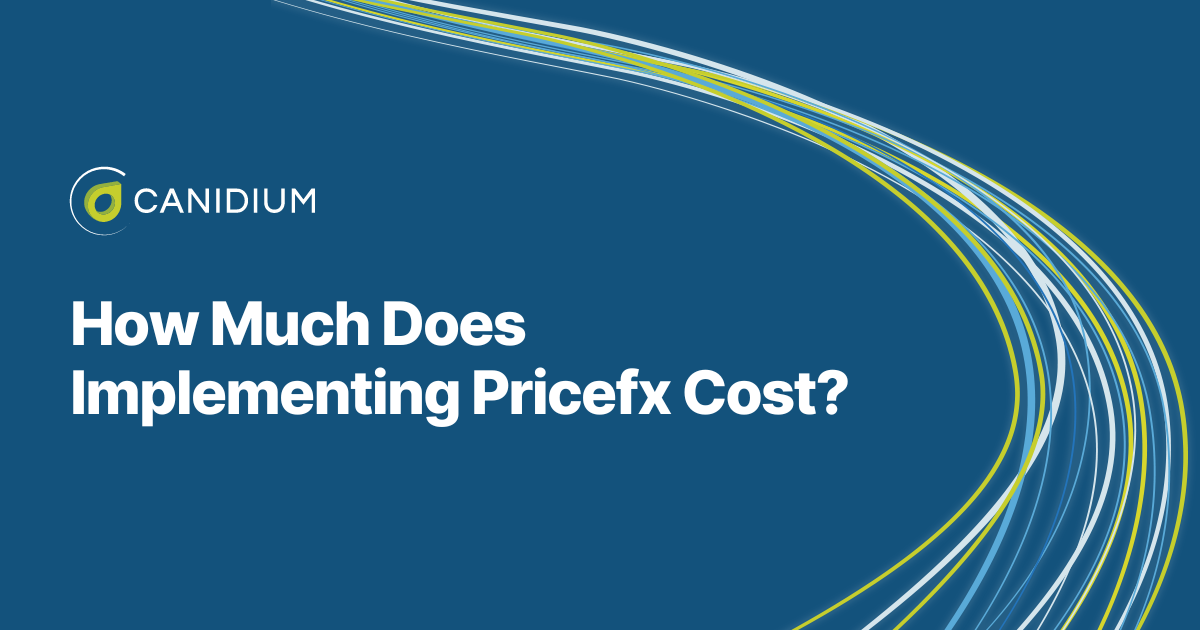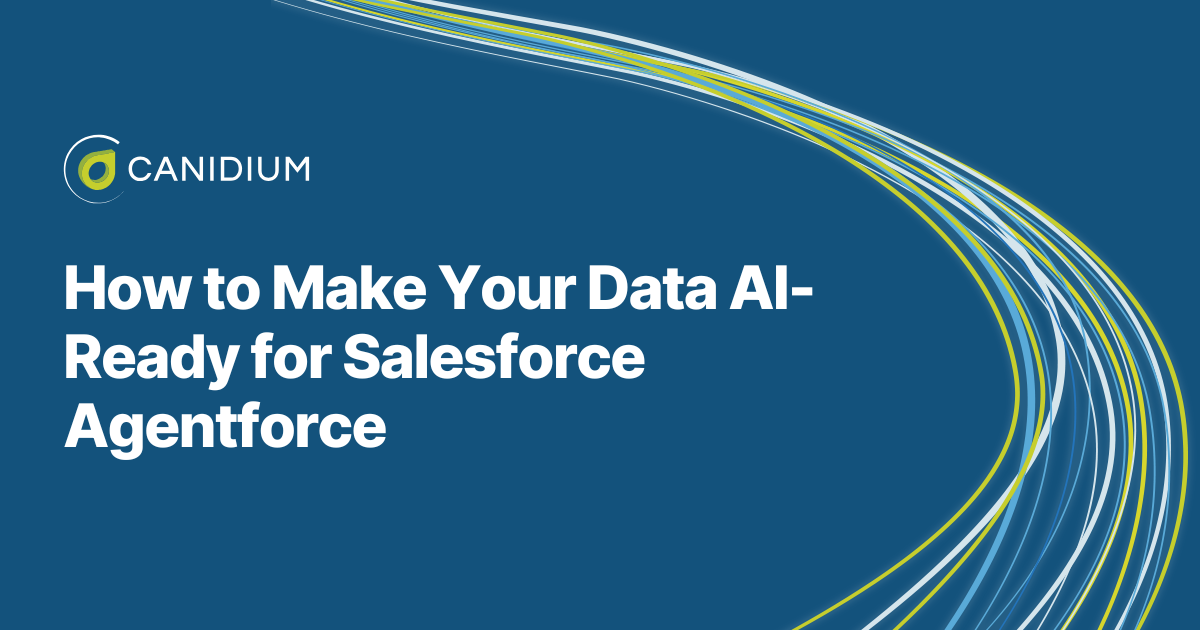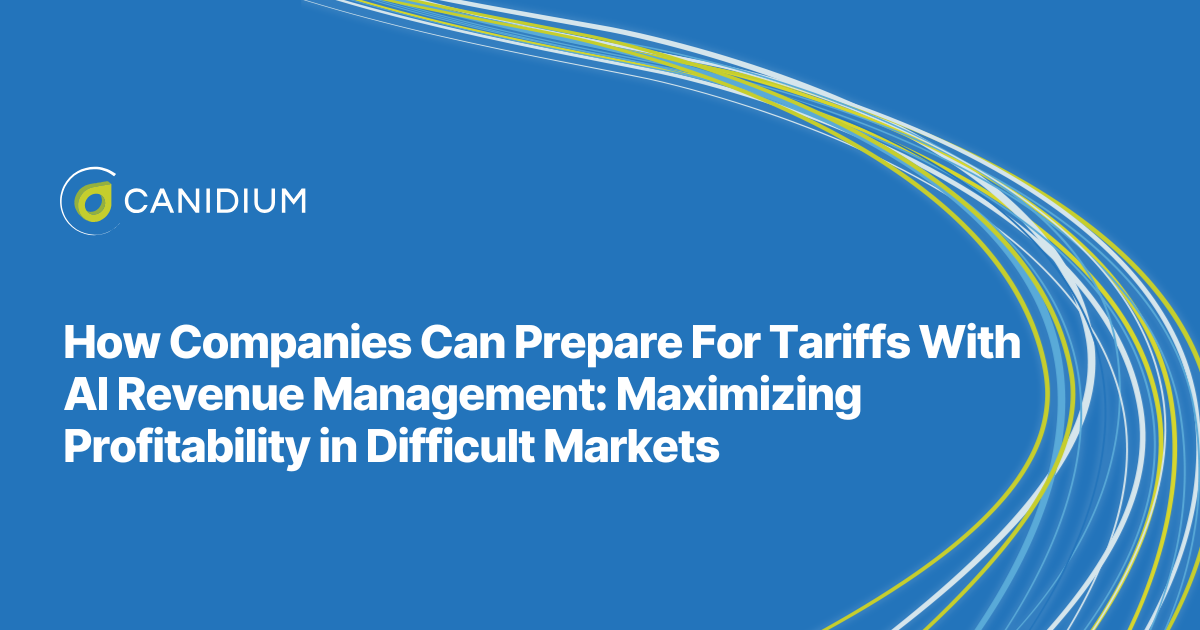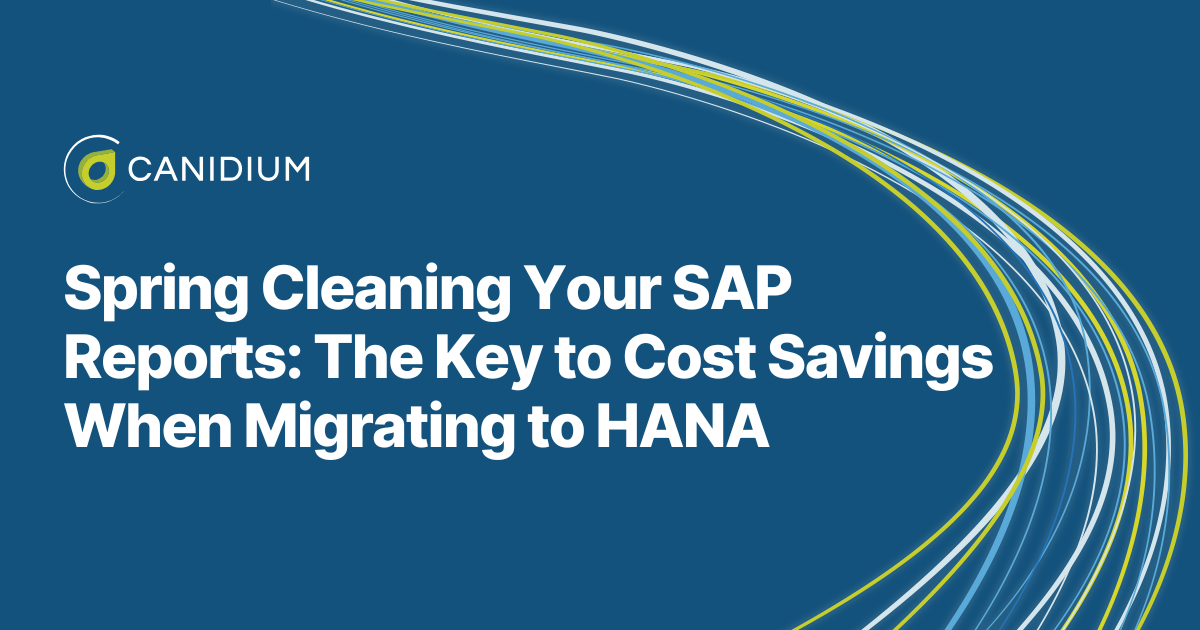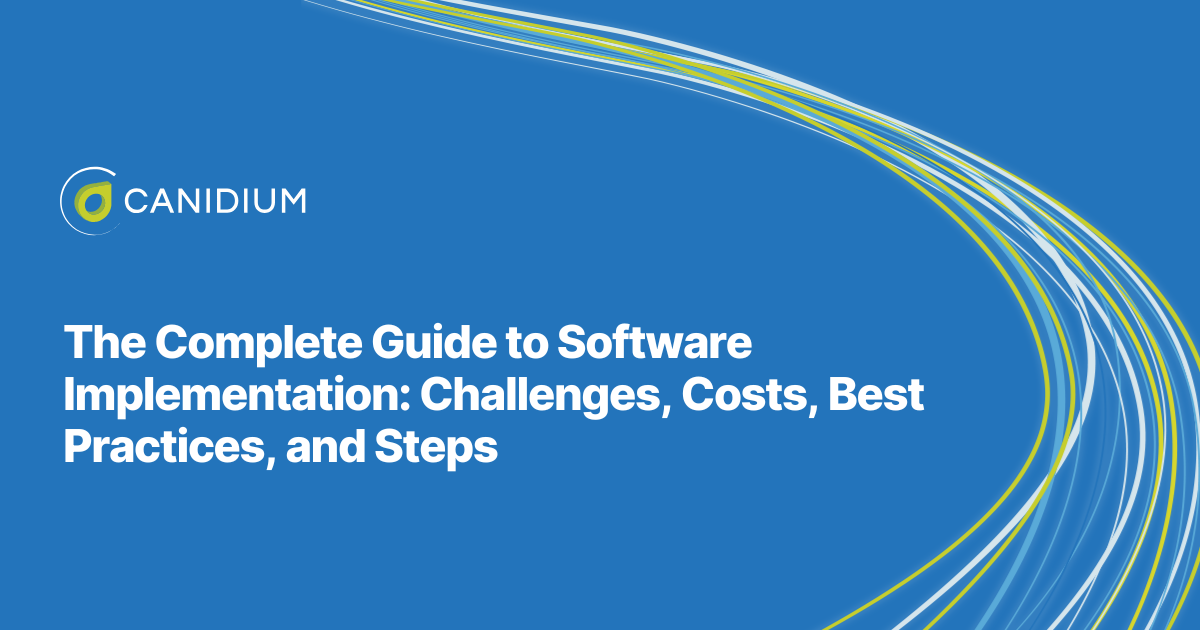If you're considering implementing Pricefx for your organization, it is essential to understand that there's no one-size-fits-all answer to how much it will cost. The pricing of each project can vary significantly, and it all boils down to several critical factors unique to your organization.
However, based on the expensive experience of our Pricefx implementation team at Canidium, this guide provides three pricing estimates based on the size and complexity of your project. To give you an idea of what your pricing factors are and what your project size range is, we cover the following topics:
- Why each project is priced differently
- The factors that impact your implementation costs
- Estimated Pricefx implementation costs by project size
- Pricefx implementation case study
- Getting your own Pricefx implementation estimate
Why Each Project is Priced Differently
There are two cost considerations in any software implementation project: licensing fees and implementation costs. Your licensing fees are usually determined directly by your software vendor. Alternatively, your implementation costs are generally quoted by your SI partner.
Pricefx project costs are determined by size, feature set, and implementation complexity. Companies implementing more features or complex strategies usually have a higher cost range. Alternatively, smaller-scale or more targeted implementation projects will typically incur lower costs.
Unique organizational factors and project goals will determine the exact cost of your implementation. You will need to speak directly to your software implementation team to determine your project costs. However, we can provide general estimates for companies heading into Pricefx implementations based on the following critical factors.
The Factors that Impact Your Implementation Costs
With the understanding that each project is priced differently, it is impossible to provide an exact estimate that covers all potential implementations. However, it is possible to provide a general estimate of your costs based on the following parameters, the most important of which is the size of your project:
.png?width=1920&height=1080&name=Medium%20(2).png)
Size of Your Organization
- Small: Organizations in the small category typically face fewer requirements, leading to a lower cost range. The streamlined needs of these businesses allow for a more basic implementation, focusing on core functionalities without the complexity of larger operations.
- Medium: As businesses expand, so do their needs. Medium-sized organizations incur moderately higher costs as they require more robust features and scalability to support their growing operations.
- Large: Costs increase for large enterprises, reflecting the extensive complexity and scale of the deployment. These organizations demand comprehensive solutions that integrate deeply with their extensive business processes and data systems.
Selected Features
All project sizes include standard analytics and a 3-level workflow, which form the base for pricing. However, on top of this standard offering, additional features impact the project's size accordingly:
Additional Features:
- Small: Choose one additional feature.
- Medium: Choose two additional features.
- Large: Choose three additional features.
List Price Setting
The strategy for setting list prices escalates in complexity with the organization's size. Larger organizations often adopt multiple pricing strategies to cater to a diverse market, influencing both the system's complexity and the cost of implementation.
Contracts Structure
The complexity of contractual frameworks increases with the size of the organization. Larger entities require more sophisticated configurations to accommodate complex contractual agreements, affecting both the implementation timeline and cost.
Promotions
Promotions become more complex with organization size. Larger enterprises often manage a wider variety of promotions, which can significantly impact the implementation's complexity and cost.
Future Capabilities for Next-Stage Projects
Features like Price Optimization, Sales Compensation, and Channel Manager add to the cost and implementation effort. Consequently, these capabilities are often implemented as second-stage projects after Pricefx is live or during larger implementation projects.
Integration Complexity
While all sizes include essential inbound integrations, medium and large organizations require additional outbound integrations to systems like ERP, data lakes, or CRMs. These integrations are crucial for ensuring seamless data flow across business functions but also add to the complexity and cost of the project.
Timeline
- Small: The shortest implementation timeline of 3-5 months lowers costs for small organizations.
- Medium: A moderate implementation timeline of 4-6 months balances the need for expanded features with a manageable project duration.
- Large: The largest implementations take the longest time, over 6 months, and often require multiple releases to production, reflecting their complexity and scale.
Estimated Pricefx Implementation Costs by Project Size
The cost estimate guide categorizes implementation scopes into three sizes, each with unique features and integrations to match varying business requirements. From setting up basic list prices to integrating advanced pricing strategies and analytics, the cost estimates provided herein are designed to help decision-makers plan and allocate resources effectively.
This comprehensive breakdown ensures businesses can anticipate the investment needed for a Pricefx implementation that aligns with their operational scale and strategic goals. However, it is important to note that this pricing guide does not cover all scenarios. Unique project factors may impact your costs, so you should discuss your project with your implementation team to receive a personalized estimate.

A Pricefx Implementation Case Study
Pricefx implementation costs are a fraction of the savings it generates. This means that companies that adopt Pricefx can expect to see an impressive net gain. Of course, your returns will depend on unique market and organizational factors. However, Pricefx implementations have a proven track record of yielding significant returns.
For instance, a global technology company with an annual revenue of $1 billion decided to implement Pricefx software with Canidium. Here is how the project yielded a margin expansion of 3%:
- Efficiency Gains: Pricefx streamlined and automated pricing workflows, reducing the time and effort required for manual pricing adjustments. This increased efficiency led to cost savings and allowed pricing teams to focus on more strategic aspects of their roles.
- Access Dynamic Pricing for Enhanced Profitability: Pricefx empowered this business to adopt dynamic pricing strategies and respond quickly to market changes, competitor pricing, and customer behavior. This enabled them to maximize revenue by adjusting prices based on demand fluctuations, promotional events, and other market dynamics.
- Improved Decision-Making with Data Analytics: Pricefx allowed this business to analyze customer behavior, sales trends, and the impact of different pricing strategies. This led to more accurate pricing structures and a better understanding of customer preferences.
- Gain Competitive Advantage: Pricefx provided the tools to stay ahead of competitors by continuously optimizing pricing strategies and adapting to market changes. Responding swiftly to market dynamics created a sustainable competitive advantage.
.png?width=1920&height=1080&name=Medium%20(6).png)
Getting Your Own Pricefx Implementation Estimate
The cost of implementing Pricefx varies based on factors such as the size of your organization, the complexity of the required features, and the depth of integration needed with existing systems. From small businesses looking for basic pricing functionalities to large enterprises needing comprehensive, integrated solutions, the investment in Pricefx is shaped by unique organizational needs and project specifics.
Understanding these costs is crucial and involves a detailed evaluation of your current systems, careful planning of the project's scope, and active engagement with all stakeholders involved. Regular reviews and adjustments ensure the project remains aligned with budgetary constraints and strategic objectives. Additionally, the implementation complexity and the integration needs underscore the importance of discussing pricing with your software implementation partner.
While this guide provides generalized implementation estimates to help you understand the basic cost ranges for differently sized projects, you should contact your Pricefx software implementation team to receive a customized pricing estimate that reflects your specific organizational needs and goals. Engaging early with your implementation team will help you understand the financial commitment involved and prepare you for a smooth transition and successful deployment of the Pricefx solution.
In the meantime, prepare for your pricing solution implementation with this guide to beginning your project.


